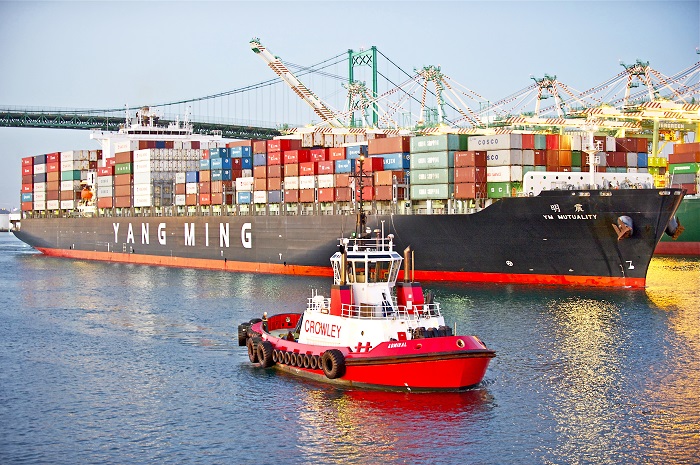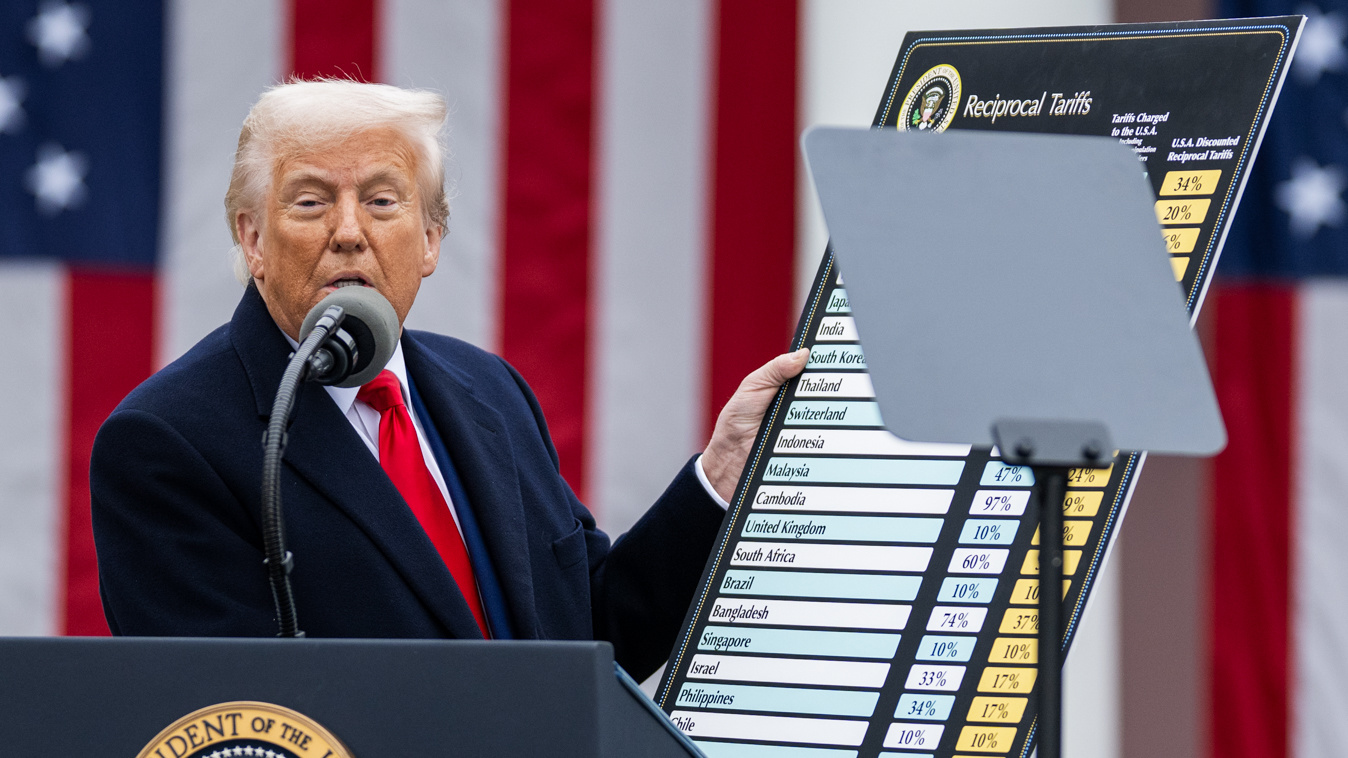By Jeff Ferry and Steven L. Byers, PhD
Economic modeling results from the Coalition for a Prosperous America (CPA) show that an across-the-board 25% tariff on all China imports would deliver a significant, sustained boost to the US economy, including the addition of $125 billion to GDP in 2024 and the creation of 721,000 additional jobs.
CPA modeled the imposition of a permanent, across-the-board 25 percent tariff on all US imports from China, totaling more than $500 billion gross value, and examined the effects on the US economy over the years 2020 to 2024. The results show that the tariff boosted growth in real gross domestic product (GDP) each year, contributing 0.5 percent of additional GDP in 2024.
Under such a scenario, some production would be reshored to the US while other production would move to lower-cost third countries, dampening or eliminating import price increases. Therefore, the expected growth comes from two main sources. First, the portion of Chinese production that migrates back to the United States will boost US output and employment. The growth in production brought back to the US starts small, at under $1 billion in the first year (2020) but accelerates rapidly to reach $69 billion in 2024 (and would continue growing if the model were extended further). Second, the portion of Chinese production that migrates to lower-cost third countries will reduce the average cost of US imports slightly. This stimulates US consumption and production, generating additional growth.
“Our model demonstrates that across-the-board US tariffs on Chinese imports stimulate the US economy, increase US production and jobs, and lead to a reduction in US import costs over time,” said CPA Chief Economist Jeff Ferry. “This result is consistent with US experience in 2018 and early 2019, when tariffs in steel, aluminum, and other industries led to job creation in those sectors. The modeling results provide additional evidence that decoupling the US economy from China and its predatory trade and subsidy practices will make the US economy stronger, with more production, investment, and jobs.”
Our economic model was built in two parts. First we constructed a partial-equilibrium model of the sources of US goods imports, divided into 156 industrial sectors. Focusing on the largest China import sectors such as communications equipment, apparel, toys, and computers, we used information from industrial sources and published international manufacturing cost indexes to develop sector-by-sector estimates of the share of current China production that would migrate to third countries. We identified the most likely destination countries using Census Bureau information on the leading import sources for each industrial sector as well as production cost comparisons between countries.
Next, we estimated the change in costs of production caused by the migration of production to countries with different cost structures than China. Costs have risen dramatically in China in the past several years. According to the Boston Consulting Group’s 2018 Global Manufacturing Cost-Competitiveness Index, nine of the 34 countries surveyed have a lower manufacturing cost index than China, including Thailand, Indonesia, and Turkey. Production in many sectors was already leaving China for lower cost countries before the US tariff actions.
A PATB-25 tariff will speed up the pre-existing rate of departure from China. Our model also incorporates an estimate of the substantial costs to move production out of China, tempering the increased speed of departure. As a result, model results indicate that $3.23 billion of production will leave China in the first year, and by 2024, $297.4 billion will have left. To the extent production migrates from China to lower-cost countries, US import prices will trend lower. In total, these factors lower the average trade-weighted cost of imports by 4.6 percent after five years. This decrease in the cost of imports stimulates growth in the domestic economy. We then input the results of our production location model, including the new average weighted cost of production (imports) by import category into our general equilibrium model. We used the REMI general equilibrium model to forecast key variables in the US economy for the years 2020 through 2024. Key results are shown in table 1.
In 2024, the PATB-25 tariff adds 0.5 percent to real GDP. The gain in jobs starts off small, but grows rapidly to reach 721,000 jobs by 2024. Inflation rises marginally, but never by more than two-tenths of a percentage point. This is because competing forces are at work. On the one hand, Chinese imports become more expensive due to the tariff. On the other hand, production moving to other countries tends to reduce the average cost of imports. Boston Consulting Group’s research shows lower production costs in many non-China locations, which is supported by anecdotal evidence from numerous manufacturers, including comments from public companies as well as private information received by CPA from its members.
|
Table 1 – Key Economic Indicators: Baseline vs. PATB-25 Tariff on China Imports |
|||||
|
2020 |
2021 |
2022 |
2023 |
2024 |
|
|
Baseline Real GDP (2018 Dollars) |
$22.30T |
$22.98T |
$23.67T |
$24.38T |
$25.12T |
|
YOY % Changes |
3.16% |
3.03% |
3.02% |
3.00% |
3.00% |
|
PATB-25 Real GDP (2018 Dollars) |
$22.31T |
$22.98T |
$23.70T |
$24.46T |
$25.24T |
|
YOY % Changes |
3.17% |
3.04% |
3.13% |
3.18%% |
3.21% |
|
Additional GDP ($Billion) |
$1.16B |
$4.15B |
$29.86B |
$71.90B |
$125.04B |
|
Baseline Jobs (Thousands Employees) |
156,801 |
157,477 |
158,147 |
158,820 |
159,738 |
|
PATB-25 Jobs (Thousands Employees) |
156.804 |
157,501 |
158,330 |
159,249 |
160,459 |
|
Additional Jobs (Thousands Employees) |
3.0 |
23.9 |
182.7 |
429.6 |
721.0 |
|
Baseline Inflation PCE Index |
120.06 |
122.82 |
125.59 |
128.39 |
131.17 |
|
YOY % Change |
2.28% |
2.30% |
2.26% |
2.23% |
2.17% |
|
PATB-25 Inflation PCE Index |
120.07 |
122.82 |
125.59 |
128.40 |
131.21 |
|
YOY % Change |
2.29% |
2.29% |
2.26% |
2.24% |
2.19% |
Reshoring Production to the USA
The US job gains from PATB-25-induced reshoring are disproportionately concentrated in the manufacturing sector, with 192,416 additional manufacturing jobs (27 percent of total jobs created by the tariff). This is because the vast majority of US imports from China are manufactured goods. By 2024, our model forecasts that $69 billion worth of annual production will have migrated from China to the United States. While US production costs in many industries remain higher than in China, that is not the whole story. Locating production in the US offers other advantages, including lower transportation costs, more logistical flexibility, and closer connectedness to consumer markets, distributors, and senior management. Relocating in the US also insulates companies against the uncertainty of potential future trade tensions. Some industries, such as apparel, have already seen reshoring due to these advantages. A permanent tariff would speed up the process.
|
Table 2 – Additional Employment, Over Baseline, by Sector (Employees) |
|||||
|
Sector |
2020 |
2021 |
2022 |
2023 |
2024 |
|
Natural Resources |
186 |
371 |
3,031 |
7,024 |
11,852 |
|
Manufacturing |
5,064 |
8,314 |
46,937 |
112,633 |
192,416 |
|
Finance & Insurance |
-203 |
1,804 |
16,248 |
36,644 |
60,282 |
|
Services |
303 |
8.045 |
63,993 |
148,632 |
247,926 |
|
Transportation & Utilities |
93 |
1,076 |
7,949 |
18,474 |
31,013 |
|
Retail & Wholesale Trade |
-1,807 |
2,112 |
22,057 |
50,290 |
81,301 |
|
Construction |
-873 |
1,406 |
17,046 |
41,513 |
69,325 |
We have built the model using conservative estimates, including a one-time, five-year investment cost to transition production out of China. The existing pattern of imports, and the lower costs in nations in Asia, Eastern Europe, and Mexico, mean that more production leaves China for third countries than returns to the US. Nevertheless, the portion of production moving back to the US has a significant impact on economic growth.
|
Table 3 – Total Imports & China Imports by Source and Production Brought Back to US |
|||||
|
|
2020 |
2021 |
2022 |
2023 |
2024 |
|
Total Imports |
$2.39T |
$2.48T |
$2.58T |
$2.69T |
$2.80T |
|
Imports from Other Countries |
$1.89T |
$1.97T |
$2.11T |
$2.33T |
$2.65T |
|
Imports from China |
$505.66B |
$509.94B |
$474.69B |
$367.51B |
$153.94B |
|
Production Brought Back to US |
$0.88B |
$2.72B |
$16.28B |
$39.28B |
$69.45B |
|
Production that left China to Other Countries |
$2.63B |
$13.29B |
$56.45B |
$128.16B |
$227.93B |
Table 3 shows that imports from China fall dramatically. By 2024, US imports from China are just $154 billion, 71 percent lower than the 2018 level. About half of China imports, or $228 billion, have migrated to third countries. Total US imports continue to rise at single-digit rates.
Modeling Trade, Prices, and Production
Our model’s results improve on other published trade models in two ways. First, we include the positive effects of trade action on production, rather than focusing only on consumption changes resulting from price changes. Second, we corrected for the exaggeration of price effects contained in prior models.
As to the first point, most trade models are designed to exclude any production increase benefits. That is because they assume that production is already at an “equilibrium” level and cannot increase, except through price effects, such as a fall in the price of imports leading to increased consumption. Our model allows production and employment increases rather than assuming them away. If a trade action like a tariff stimulates an industry and leads to more production and jobs at a higher pay than was previously prevalent in a region, that creates an increase in GDP. We saw this dynamic at work in 2018, when steel and aluminum tariffs led to the creation of jobs paying over $50,000 a year for workers without a college education, well above prevailing wages in those regions.
As to the second point, traditional models exaggerate price effects because they assume that the entire cost of a tariff is passed on to the US consumer. That assumption causes those models to overestimate the reduction in consumption, demand and employment across the economy. However, demand for virtually every one of the tariffed goods has some elasticity, i.e. demand falls in response to rising prices. Therefore a tariff leads to some decline in the pre-tariff price of imports. The tariff pass-through rate will differ significantly among products. The evidence of 2018 and Q1 2019 confirms that overall consumer prices as well as sectoral consumer prices were scarcely impacted by the Section 232 and Section 301 tariffs levied on steel, aluminum, and many Chinese products. China-only tariffs will lead to less price pass-through than worldwide tariffs, as Chinese exporters will be forced to compete with non-tariffed goods from other countries.
Other factors will impact the economic results of the PATB-25 tariffs. One important determinant is the extent to which the business community believes that the tariffs are here to stay. Investment decisions, like moving production from one country to another, are complex, expensive, and depend on highly subjective views of the future. Investing in the US provides more certainty in a trade intervention environment than in China or even in third countries. The speed of migration of production out of China will accelerate to the extent that business leaders are convinced that a penalty on importing from China will be substantial and permanent.
In conclusion, our model shows a significant boost to the US economy from across-the-board tariffs on China. Production and employment will increase due to the shift of some manufacturing industry back to the US. Further economic gains will result from accelerating production shifts to lower-cost, non-China countries. The boost to US national security is significant, though outside the scope of this purely economic model. Decoupling from China reduces our dependence on an unfriendly nation which is a military, industrial, and geopolitical rival.












